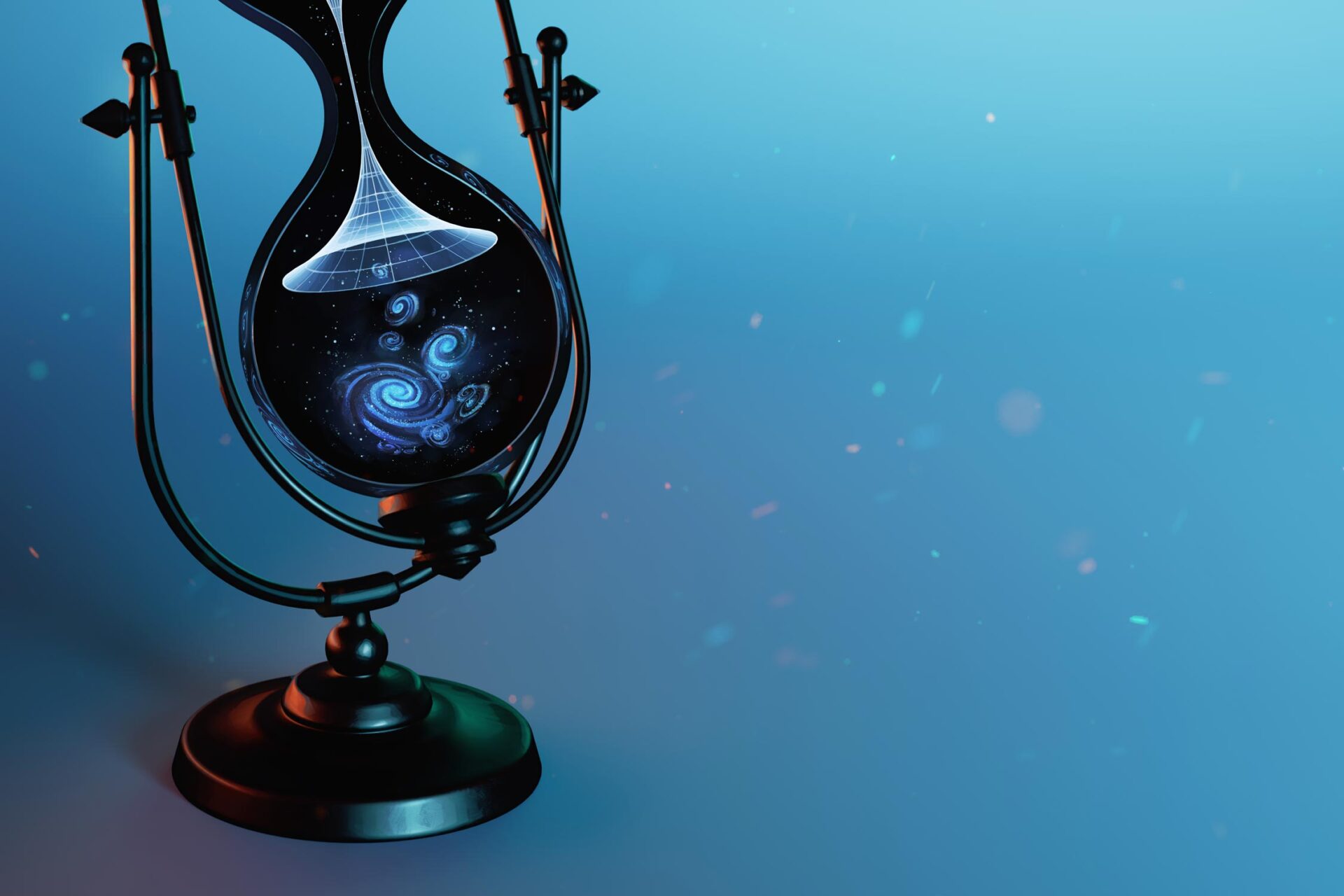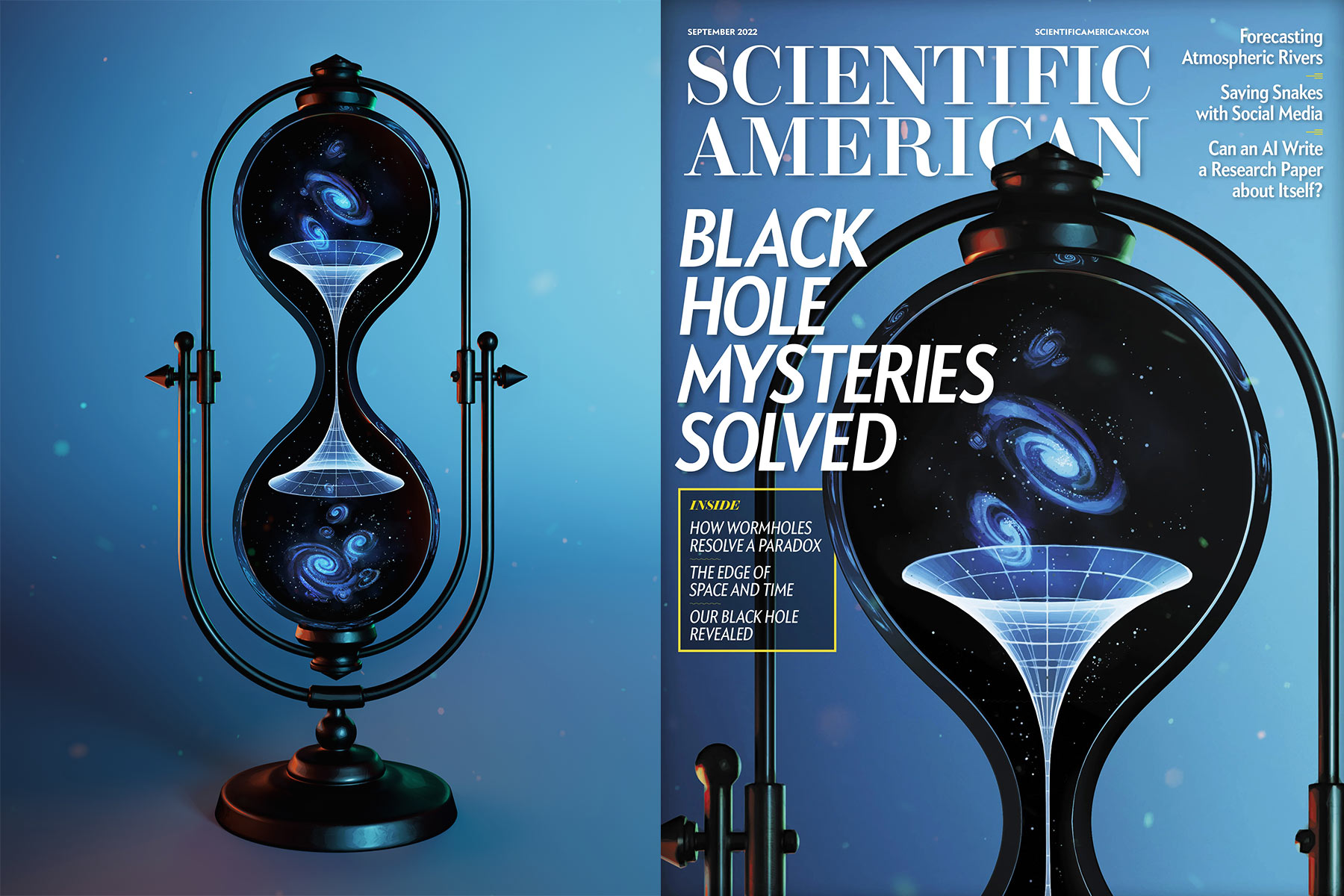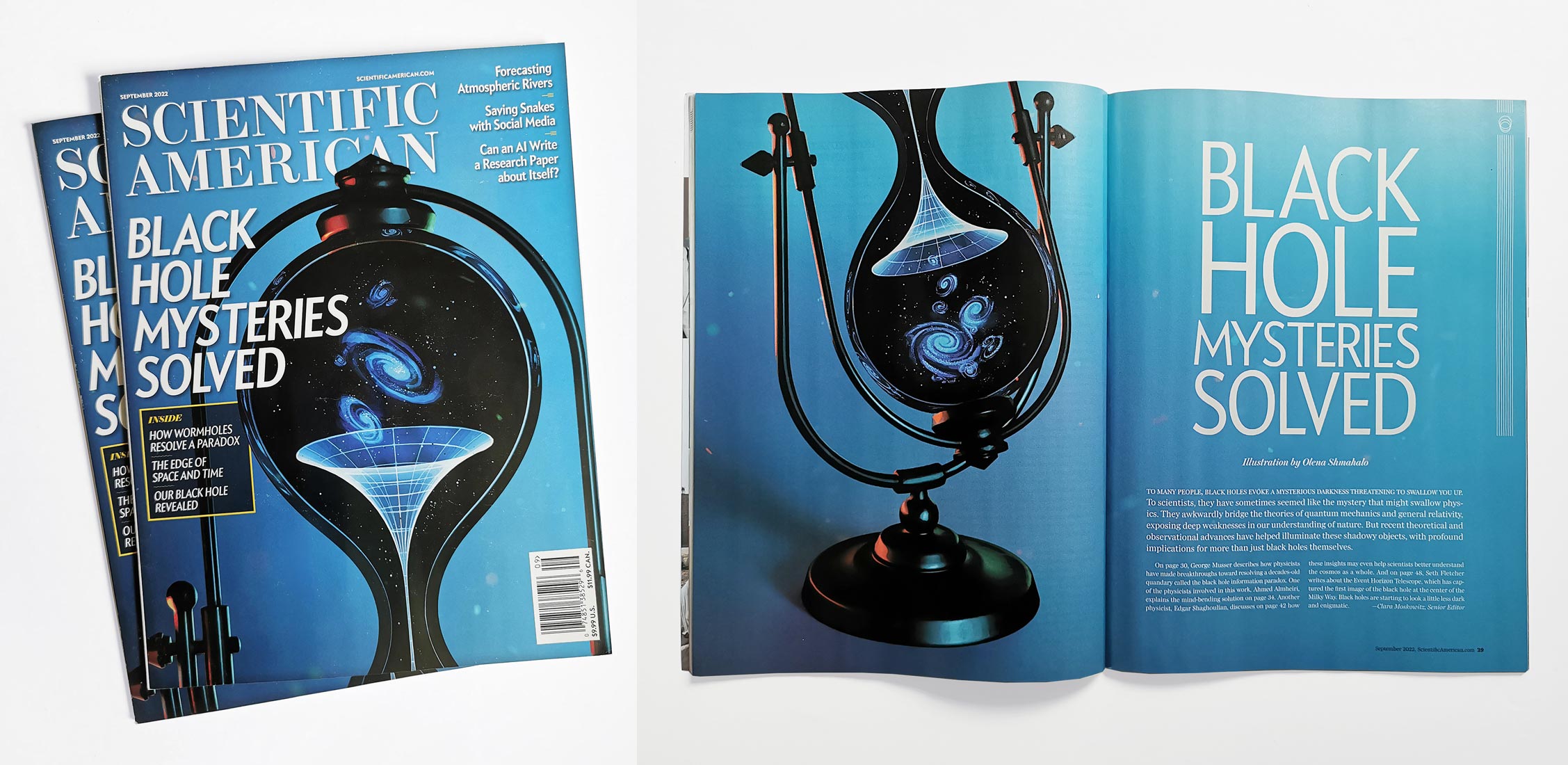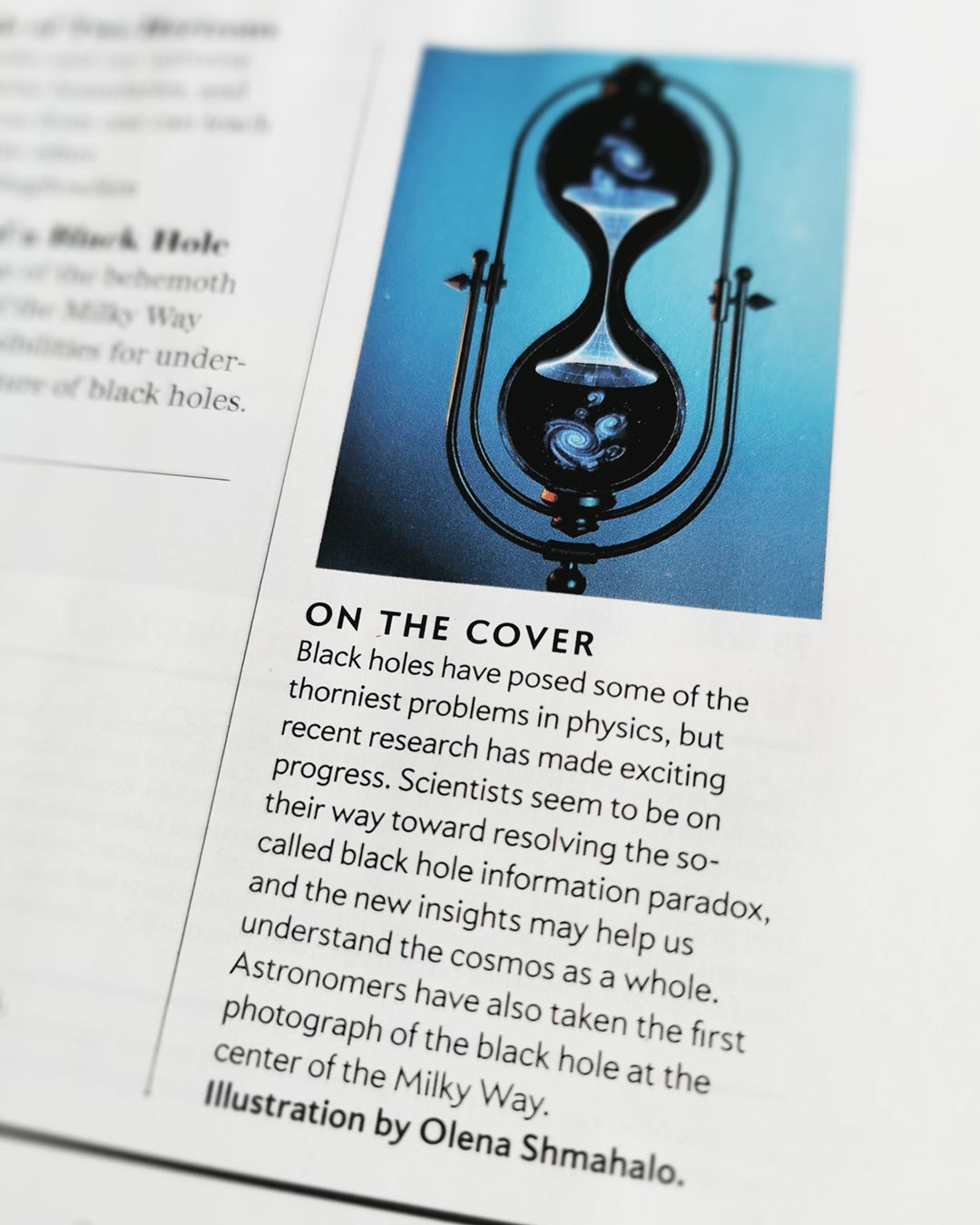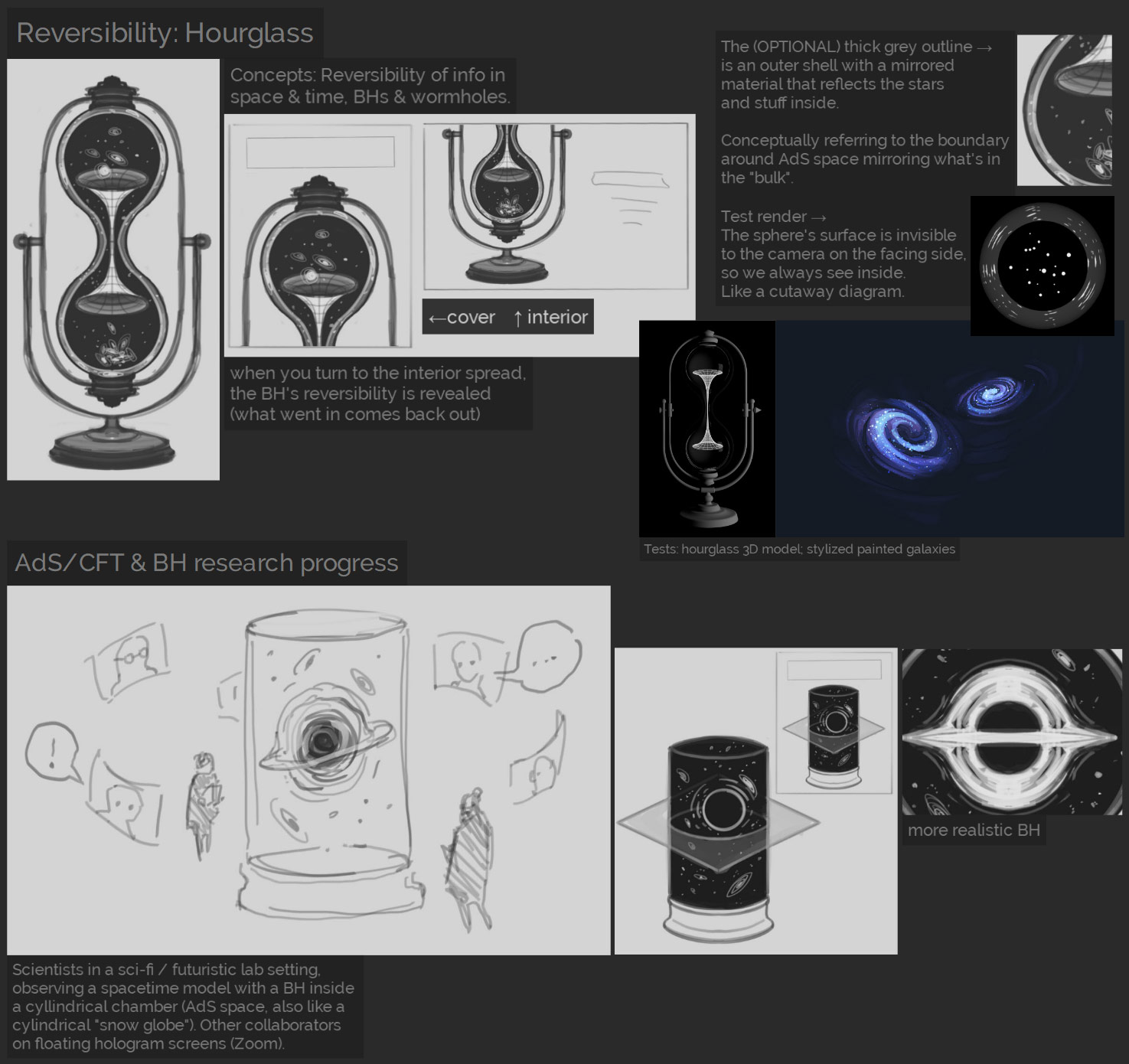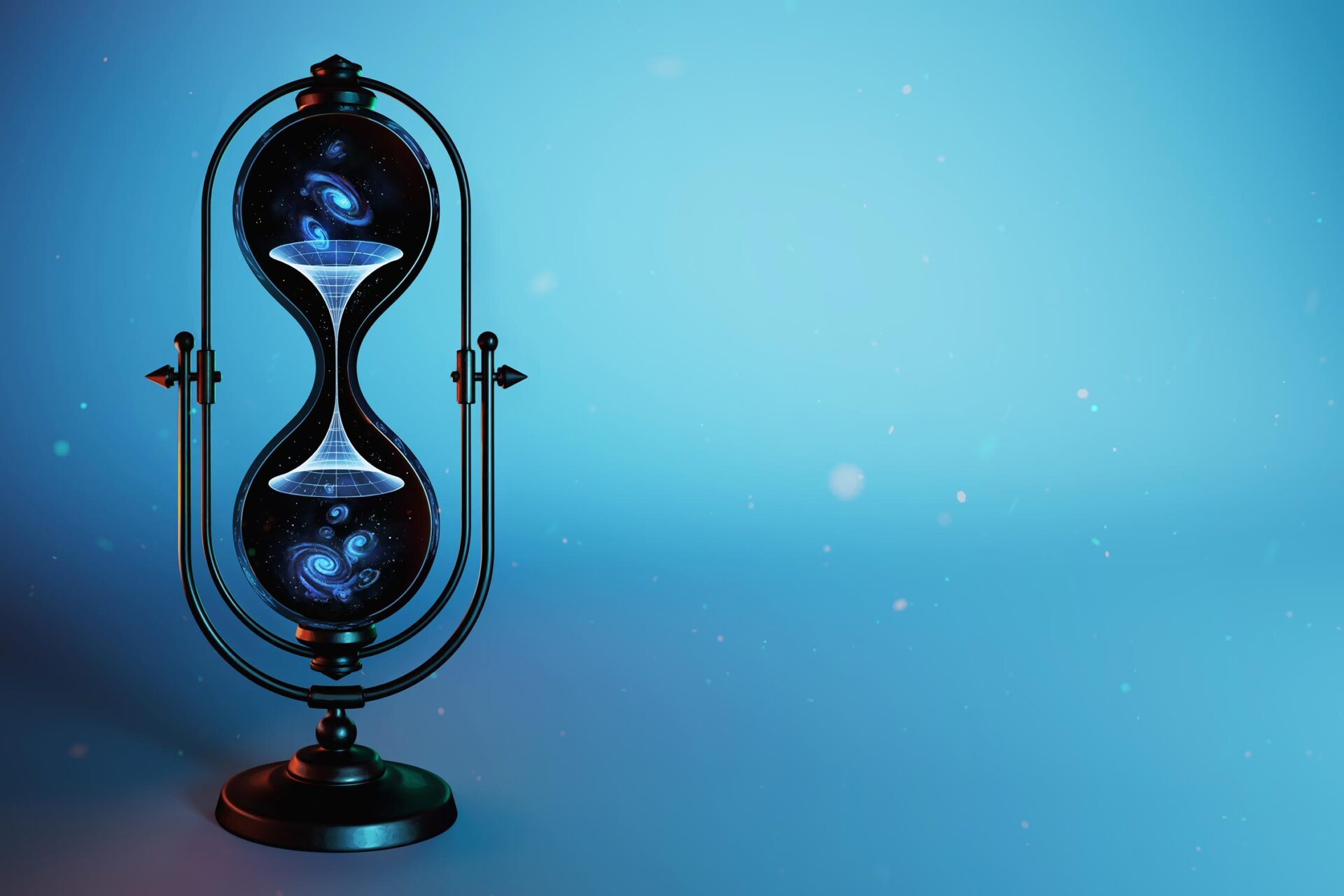Black Hole Information Paradox
Editorial / Science Illustration • Cover & Spread • Scientific American • 2022
FOR
Scientific American, September 2022, Volume 327, Issue 3. Thanks to CD Michael Mrak.
WORK
Concepts, cover & interior illustrations
TOOLS
Cinema 4D, Redshift, Photoshop
INFO
Related article: Black Hole Mysteries Solved - Clara Moskowitz
In the issue, George Musser covers the black hole information paradox — that information cannot be destroyed, and yet black holes appear to swallow it, leaving no trace when they evaporate. But new research confirms that black holes are reversible after all, conserving information. (the principle of reversibility). Thus the cover concept: a black hole encased in an hourglass. When you turn to the interior spread, the black hole's reversibility is revealed: what goes in comes back out.
© Olena Shmahalo
